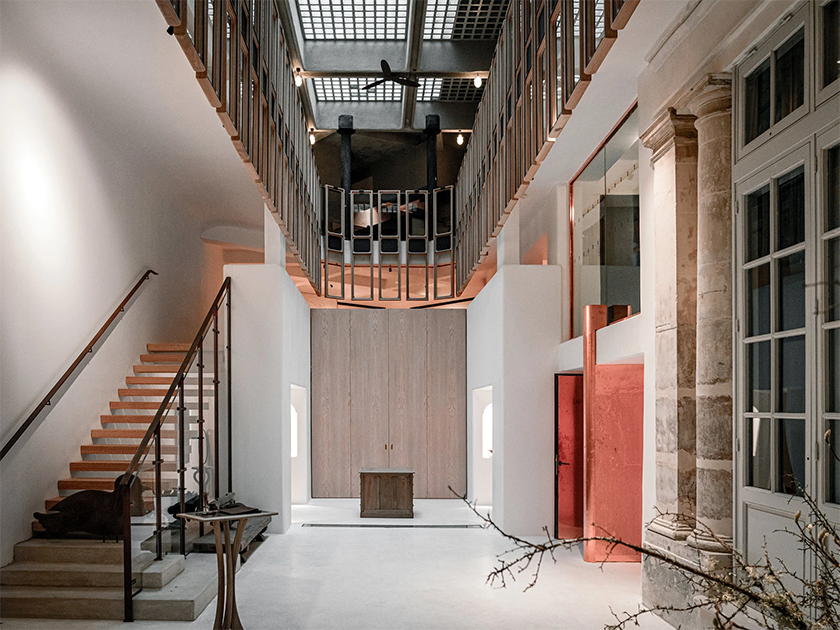
The atrium-like central space has an oak staircase with hand-finished treads using the traditional Japanese “naguri” wood-shaving technique.
Image courtesy of: The New York Times Magazine, photographed by: Joann Pai
On a narrow, elegant street in Paris on Rue Debelleyme off Rue Vieille du Temple stands a grand 17th-century mansion that was previously home to a hardware store. Recenly, this private mansion got upgraded “digs” and is now home to Ogata Paris, a multistory complex encapsulating all things Japan.
The mastermind, Shinichiro Ogata, opened his newest project in order to share the customs and habits of his native country. Inside, there is a tea shop and tea salon, a full-service restaurant, a pastry shop, a bar, an art gallery, and a crafts and houseware store. Ogata hopes to guide the visitors towards “sahō”, the art of being.
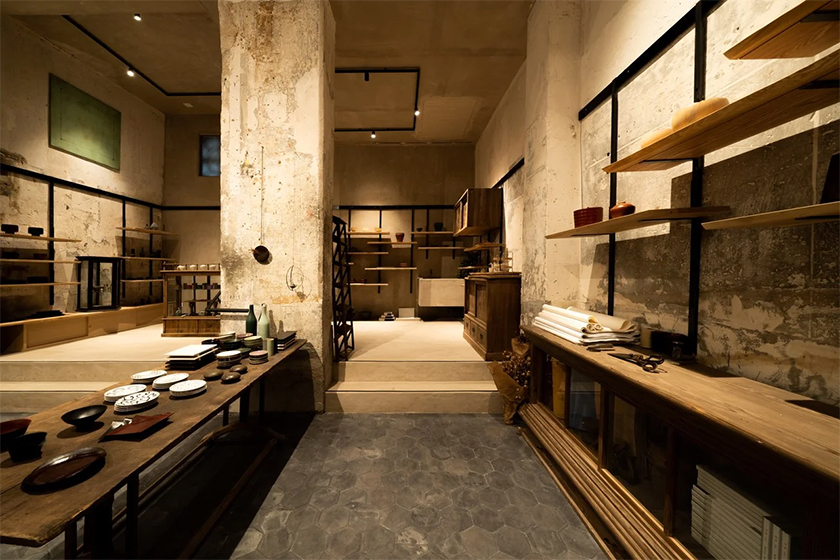
The Ogata Atelier is dedicated to rare objects such as Japanese ceramics and glasses, sake containers, and plates with fine and traditional prints.
Image courtesy of: Vogue Paris
Ogata is an architect, designer and restauranteur who hails from Tokyo. Following through with his vision of showcasing everything Japan has to offer, every small detail was designed by Ogata himself. The designer makes sure he keeps true to the same pursuits that he has used in the past… for example, his Tokyo bistro that is set in a tree-filled garden in a residential area.
The move into Paris seemed natural… as the French are known to have a fascination with 19th-century Japanese paintings and decorative art. Such truth is further evident after the French coined the term Japonisme. It seems only logical that the two countries have a shared interest in all “things of style.” It is in both Japan and France that style is considered essential to life.
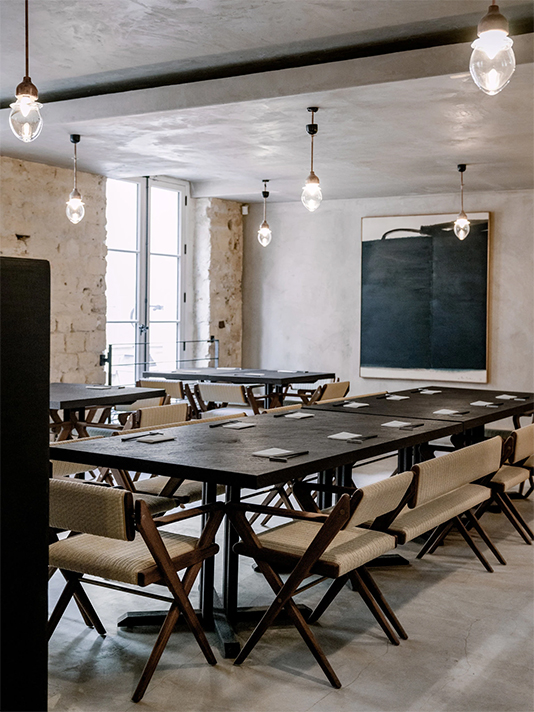
The restaurant’s main dining area incorporates a mix of woods- wenge, teak, and hibachi. The custom chairs are made with braided oak.
Image courtesy of: The New York Times Magazine, photographed by: Joann Pai
Ogata was very careful to preserve the building’s bones saying, “This stone is original. It is very important to keep a part of France so as not to be imposing. To me, France is outside and we are sharing some space to bring Japan within.”
Centuries ago, the Chinese gardening principle of “shakkei” (or borrowed scenery) originated. The idea was to incorporate essential elements of background landscape into the inside. So it was only natural that in the 1960’s, as Modernists began blurring the lines between indoor and outdoor spaces, the concept was formed that made the garden the pinnacle of Japanese contemporary design.
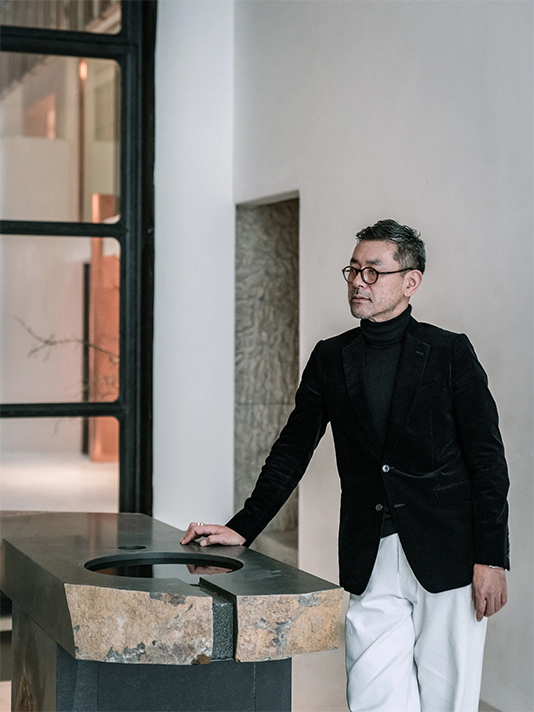
Shinichiro Ogata at Ogata Paris.
Image courtesy of: The New York Times Magazine, photographed by: Joann Pai
Ogata’s firm is named Simplicity… how fitting! The 40-person firm designs the architecture, furniture, graphics, food, packaging, utensils, and everything in between. Simplicity’s projects encompass the total work and not bits and pieces of a collaboration.
Ogata is on a mission to make the traditional Japanese lifestyle and design culture as practical as kimonos and getas (traditional wooden Japanese sandals), as essential today as they were to his ancestors. He is insistent on taking traditional Japanese elements such as natural materials and quiet restraint and making them a part of the present. He is confident that in translating traditional Japanese culture, there is something for everyone.
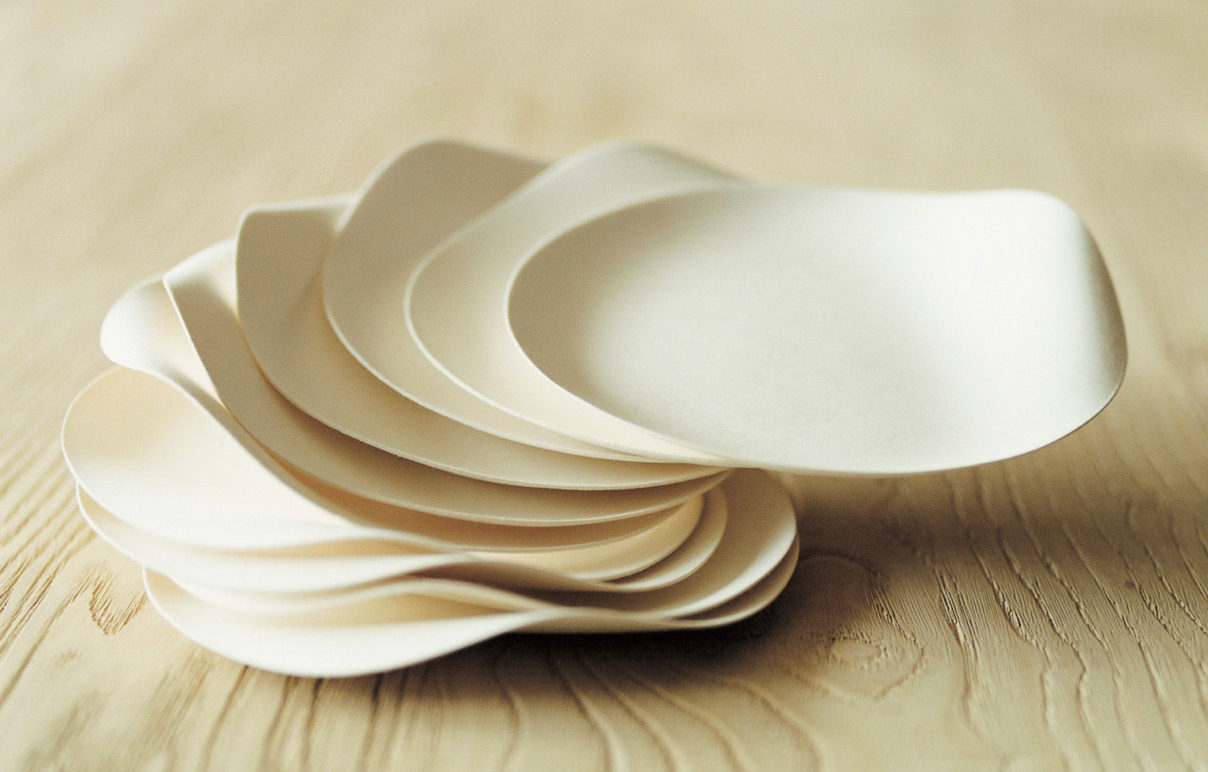
Among other things, Simplicity designed a collection of eco-friendly paper tableware called Wasara. Some people say, rightfully so, that these are too pretty to throw away!
Image courtesy of: IDEASGN
Ogata believes that there are five pillars to Japanese dining culture: tea tasting, using a utensil properly, savoring a meal, hospitality, and reflection. The designer is extremely passionate about the traditional, highly orchestrated tea ceremony that dates back to the 9th-century. Ogata Paris’ tea shop is anchored by a beautiful copper-topped black stone counter and here, guests can choose between rare green tea varieties not often seen outside of Japan.
The cathedral-like ground floor is a dimly-lit and quiet space, and the vaulted double-height ceiling has a central skylight that is surrounded by the glass circle on the white terrazzo floor. The nearby bubbling pond is one of the only sounds that you will hear as there is no music playing in the background. The only sounds around are those of trickling water, clinking glasses, and parchment paper as it is used to wrap a present.